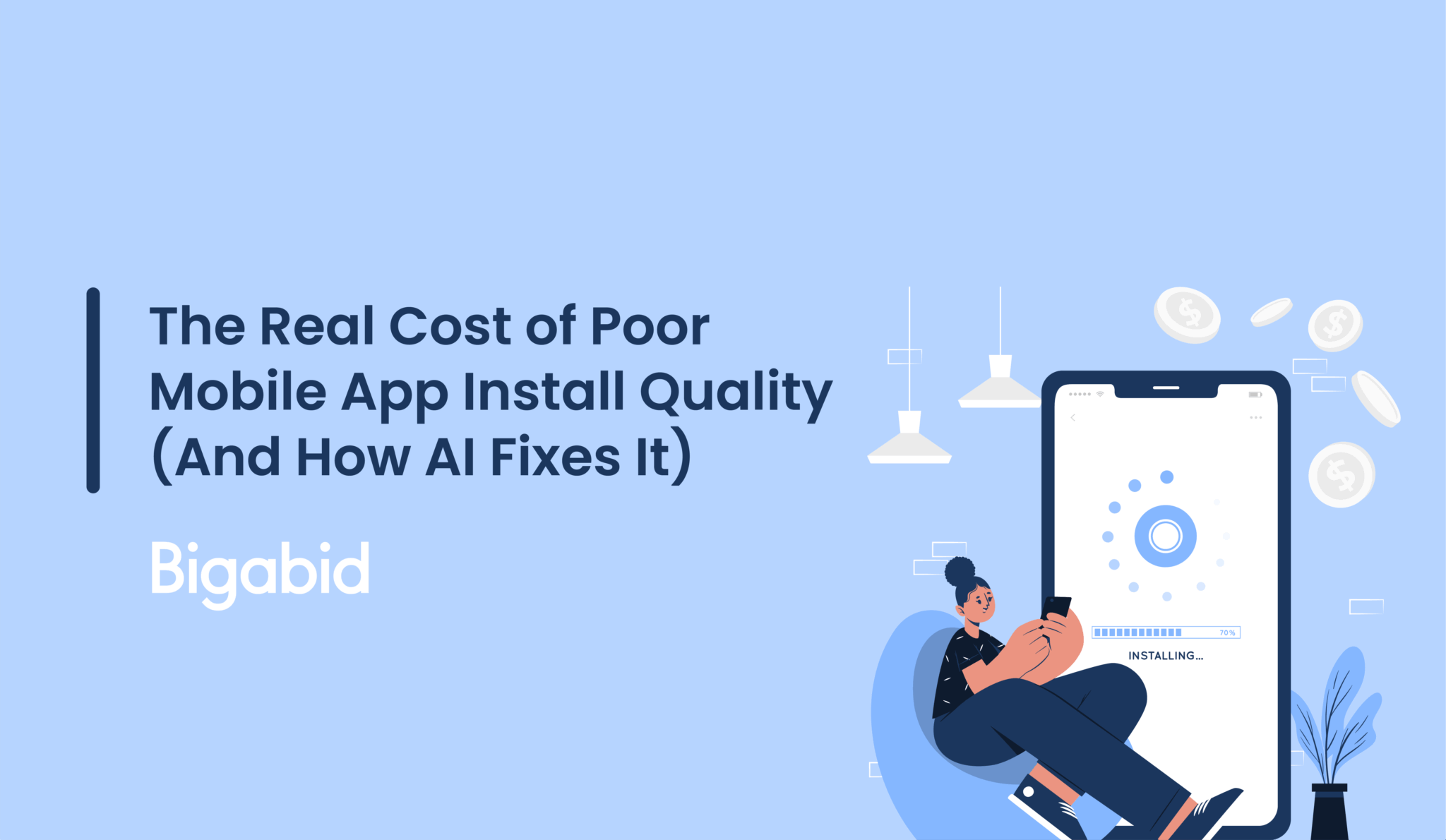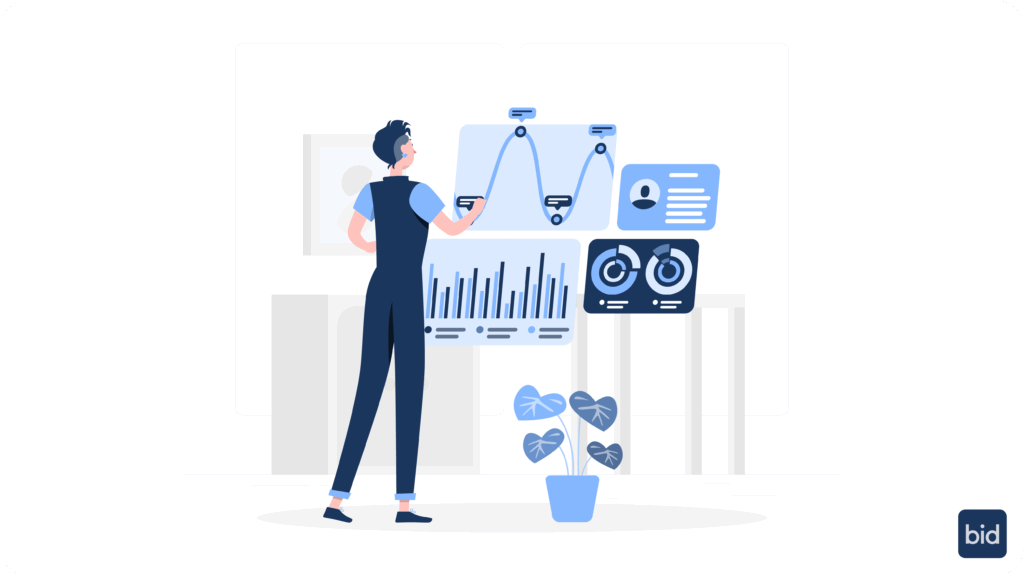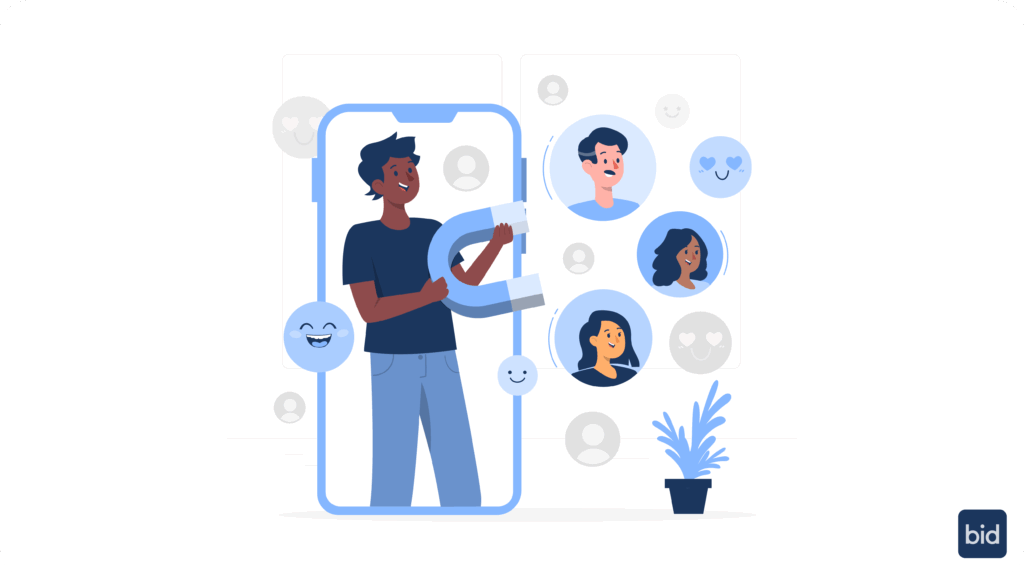
Mobile app marketers celebrate when cost-per-install metrics drop. Teams highlight install volume growth in monthly reports. Everyone focuses on acquiring more users for less money.
But there’s a critical question that often goes unasked: are these users actually valuable?
Not all mobile app installs deliver equal value. Some users open an app once and never return. Others represent outright fraud—bots and install farms manipulating attribution systems. Many are genuine people who will never engage meaningfully with the app.
The difference between high-quality and low-quality installs extends beyond engagement metrics. It’s the difference between profitable growth and wasting marketing budgets on users who contribute nothing to business goals.
Poor install quality damages campaign economics in ways that don’t appear in standard dashboards. Traditional metrics show how many users were acquired and what was paid. They don’t reveal that a significant portion of those installs came from users who abandoned the app within days, or that fraudulent traffic sources are gaming attribution systems.
Neural networks address this challenge by identifying and filtering low-quality users before they consume campaign budgets. These AI systems analyze thousands of behavioral signals to predict user quality and detect fraudulent patterns that rules-based systems consistently miss.

Most mobile app marketing teams track standard quality metrics like Day 1, Day 7, and Day 30 retention. These measurements provide useful directional insights but miss the complete economic picture.
Low-quality installs waste acquisition budgets in obvious ways. Money spent on users who never engage represents pure loss. A $2.50 cost-per-install becomes a complete write-off when users abandon the app immediately after installation.
The damage extends well beyond direct acquisition waste. Poor quality installs distort advertising platform algorithms. When platforms observe installs that generate no engagement, their systems categorize the app as low-quality. This results in reduced ad delivery and increased costs across all campaigns.
Attribution fraud creates an illusion of success while masking campaign failures. Install farms and bot networks generate fake installs that appear legitimate in reports. Marketing teams unknowingly optimize toward these fraudulent sources because they seem to deliver affordable installs. This creates a cycle of increasingly poor traffic quality.
App store algorithms consider engagement rates when determining search rankings and featuring decisions. When large percentages of installs result in immediate abandonment, app stores interpret this as a negative quality signal. Poor paid acquisition quality ends up damaging organic growth channels.
Internal resources get misallocated when poor quality data drives decisions. Product teams optimize features based on behavior data corrupted by low-quality installs and fraudulent traffic. Development priorities shift based on misleading signals from users who were never genuine prospects.
Creative testing becomes unreliable when low-quality traffic distorts performance data. A video creative that appears to drive strong install volume might simply be attracting bot farms more effectively than human users. Teams make wrong decisions when analyzing performance based on install volume rather than quality.
Budget allocation suffers when marketing teams struggle to distinguish between traffic sources delivering quality users and those generating cheap, worthless installs. Campaigns continue funding sources that hit cost-per-install targets while delivering poor user quality because standard reporting doesn’t clearly surface quality differences.
Perhaps the biggest hidden cost is opportunity cost. Every dollar spent on low-quality installs represents money that wasn’t spent acquiring genuine high-value users who would have generated real business results.

Modern AI systems approach install quality prediction differently than traditional fraud detection and quality scoring methods.
Pre-install behavioral analysis examines user actions before they see advertisements. Neural networks process thousands of signals about device usage patterns, app discovery behaviors, and digital activity that correlate with user quality.
Device analysis extends far beyond identifying device type. Neural networks examine hundreds of characteristics—screen resolution patterns, installed app combinations, system settings, sensor data, network behaviors—to identify anomalies consistent with emulators, bot networks, and install farms.
Traffic source evaluation assesses overall quality patterns from specific publishers, ad placements, and traffic sources. Neural networks identify sources that consistently deliver low-quality or fraudulent installs even when individual installations appear legitimate in isolation.
Timing pattern analysis detects unusual install velocity and volume patterns. Install farms often generate installation bursts within narrow timeframes. Neural networks recognize these patterns even when attempts are made to randomize timing.
Engagement probability prediction estimates user likelihood to interact with apps based on behavioral patterns observed before installation. Certain digital behaviors strongly correlate with app abandonment. Neural networks identify these patterns and flag low-engagement-probability users.
Cross-app behavioral insights leverage data from user interactions across multiple mobile apps. Users who consistently install apps without using them exhibit patterns that predict identical behavior with new apps. Neural networks identify these patterns and deprioritize such users in targeting.
Network pattern analysis identifies suspicious user clustering and connections between seemingly unrelated installs. When multiple users share similar characteristics and behaviors within narrow timeframes, neural networks recognize potential coordinated fraudulent activity.
Real-time quality scoring enables immediate assessment. Rather than waiting days or weeks to identify poor quality through retention analysis, neural networks generate predictions at installation or even before ad serving.

Mobile app install fraud has evolved well beyond simple bot traffic. Modern fraud requires detection systems operating at neural network speed and scale.
Attribution fraud manifests in multiple forms. Click injection attacks insert fraudulent clicks immediately before legitimate installs to steal attribution credit. Install hijacking redirects organic installs through fraudulent sources. SDK spoofing generates fake install events that never actually occurred.
Neural networks detect these attacks by analyzing attribution data patterns that reveal manipulation. Suspiciously short windows between clicks and installs, unusual patterns in install event data, and behavioral anomalies in post-install activity provide signals for identifying attribution fraud.
Emulator detection identifies installs occurring on device emulators rather than physical hardware. Fraudsters use emulators to generate large volumes of fake installs efficiently. Neural networks analyze device characteristics, sensor data patterns, and behavioral signals to identify emulated environments.
Install farm recognition identifies organized operations generating fraudulent installs at scale. These operations often use actual devices with real people performing manual installs, making detection challenging. Neural networks identify patterns in timing, geographic clustering, device similarity, and post-install behavior that reveal coordinated fraudulent operations.
Bot traffic filtering separates automated traffic from human users. Sophisticated bots mimic human behavior convincingly. Neural networks analyze subtle patterns in interaction timing, movement precision, and behavioral consistency that distinguish automated systems from people.
Click fraud prevention identifies invalid clicks and impressions before they generate attribution events. Neural networks analyze click patterns, user engagement with advertisements, and subsequent behaviors to identify fraudulent clicking activity.
Re-engagement fraud detection addresses schemes where fraudsters claim credit for re-engaging existing users about to return organically. Neural networks compare predicted organic return probability with attribution events to identify suspicious re-engagement claims.

Install quality encompasses more than fraud detection. It includes predicting genuine user engagement, retention, and monetization potential.
Engagement likelihood prediction estimates how actively users will interact with apps based on pre-install behavioral patterns. Neural networks identify users whose digital behaviors correlate with deep app engagement versus superficial usage.
Retention probability scoring predicts which users will continue using apps beyond initial sessions. These predictions help marketing teams focus acquisition budgets on users with high retention likelihood rather than optimizing purely for install volume.
Monetization potential estimation identifies users most likely to generate revenue through in-app purchases, subscriptions, or advertising engagement. Certain behavioral patterns strongly predict willingness to spend within apps.
Feature adoption prediction anticipates which users will explore premium features versus remaining basic users. This insight helps teams target messaging toward users most likely to adopt monetizable features.
Social sharing likelihood identifies users who will amplify apps through recommendations and content sharing. These users provide value beyond individual engagement through network effects that drive organic growth.
Support burden prediction estimates which users will require disproportionate customer support resources. While technically quality installs, their support costs can exceed their value contribution.
Churn prediction identifies users at high risk of abandoning apps quickly. Neural networks recognize early warning signals predicting imminent churn, enabling proactive retention efforts or reduced acquisition spend on high-churn-risk users.
Cross-sell potential assessment predicts which users might be valuable for other apps in a portfolio. This enables portfolio-level acquisition strategies optimizing for total ecosystem value.

Shifting from volume-focused to quality-focused acquisition requires systematic changes in campaign structure, measurement, and optimization.
Quality score integration into bidding enables dynamic adjustments based on predicted user quality. High-quality users justify premium bids, while low-quality predictions trigger reduced bids or elimination.
Traffic source optimization extends beyond simple performance comparison to quality-weighted evaluation. Neural networks identify sources consistently delivering quality users even when cost-per-install appears higher than alternatives.
Creative optimization for quality rather than volume recognizes that some creative assets attract high-intent users while others generate inexpensive but worthless installs. Quality-weighted creative testing identifies assets driving valuable users.
Audience segmentation by quality potential enables different campaign strategies for different tiers. Premium audiences receive aggressive acquisition approaches, while lower-quality segments get minimal spend or targeting exclusion.
Attribution window optimization adjusts evaluation timeframes based on quality metrics. Quality-focused attribution might weight Day 7 retention more heavily than immediate installs when evaluating performance.
Budget allocation frameworks prioritizing quality over volume require organizational change. Marketing teams must shift KPIs from install volume and cost-per-install toward quality-weighted metrics.
Platform communication ensures advertising platforms understand quality requirements. Most major platforms now support quality-based optimization signals enabling their algorithms to optimize for engagement rather than pure install volume.
Fraud monitoring infrastructure provides ongoing surveillance. Fraudsters continuously evolve tactics, requiring continuous monitoring and model updates to maintain detection effectiveness.

Mobile app marketing teams implementing quality-focused strategies with neural network filtering typically see significant improvements.
Economic efficiency improves when marketing budgets stop funding fraudulent installs and low-quality users. Teams often achieve better user quality while reducing overall acquisition spend by eliminating waste.
User lifetime value increases when acquisition focuses on users with genuine interest and engagement potential. Average revenue per user typically rises significantly when low-quality installs stop diluting the user base.
Retention rates improve as acquisition targets users whose behavioral patterns predict sustained engagement. Day 30 and Day 90 retention often show substantial improvement when quality filtering eliminates unlikely-to-engage users.
Campaign optimization effectiveness increases when algorithms train on clean data representing genuine user behavior. Advertising platforms deliver better results when not confused by signals from fraudulent or low-quality installs.
App store performance strengthens as engagement metrics improve and abandonment rates decline. Better organic visibility often results from improved quality signals that app stores interpret as indicating superior experiences.
Internal team efficiency improves when resources focus on genuine user needs rather than behaviors from fraudulent or disinterested users. Development priorities based on clean data lead to better product decisions.
Competitive positioning strengthens as efficiency enables more aggressive bidding for high-quality users while competitors waste budget on low-quality traffic. This advantage compounds over time as neural networks accumulate more data.

Quality-focused acquisition represents mobile app marketing’s maturation from growth-at-all-costs toward sustainable, profitable user acquisition prioritizing user value.
This shift requires organizational change beyond technical implementation. Marketing teams need new KPIs, reporting frameworks, and success criteria emphasizing quality measures.
Fraud continues evolving as detection systems improve. Fraudsters develop new techniques to evade detection, requiring continuous advancement in neural network capabilities.
Privacy-compliant quality detection becomes increasingly important as regulations limit certain data collection methods. Neural networks must maintain prediction accuracy while respecting evolving privacy requirements.
Cross-platform quality standards will likely emerge as marketers recognize that quality definitions should remain consistent across acquisition channels and advertising platforms.
Predictive quality modeling will advance beyond current capabilities toward anticipating emerging fraud patterns before they impact campaigns significantly.

Install quality fundamentally determines mobile app marketing success. Quality-focused acquisition enables profitable growth, while volume-focused acquisition often wastes marketing investment.
Neural networks transform quality management from reactive fraud detection and post-install analysis to proactive quality prediction protecting budgets before waste occurs. These systems identify fraudulent traffic, predict user quality, and optimize acquisition in ways traditional methods cannot match.
Bigabid’s neural network platform analyzes thousands of behavioral signals and fraud indicators to predict user quality before installation. The platform enables mobile app marketers to eliminate fraudulent installs, filter low-quality users, and focus acquisition budgets on users who generate meaningful engagement and revenue.
Marketing teams using AI-powered quality prediction protect campaign budgets from fraud, improve user lifetime value, and achieve sustainable mobile app growth through quality-first acquisition strategies.
Contact Bigabid to learn how neural network quality prediction can transform mobile app user acquisition by identifying high-quality users and filtering fraudulent traffic before it drains campaign budgets.